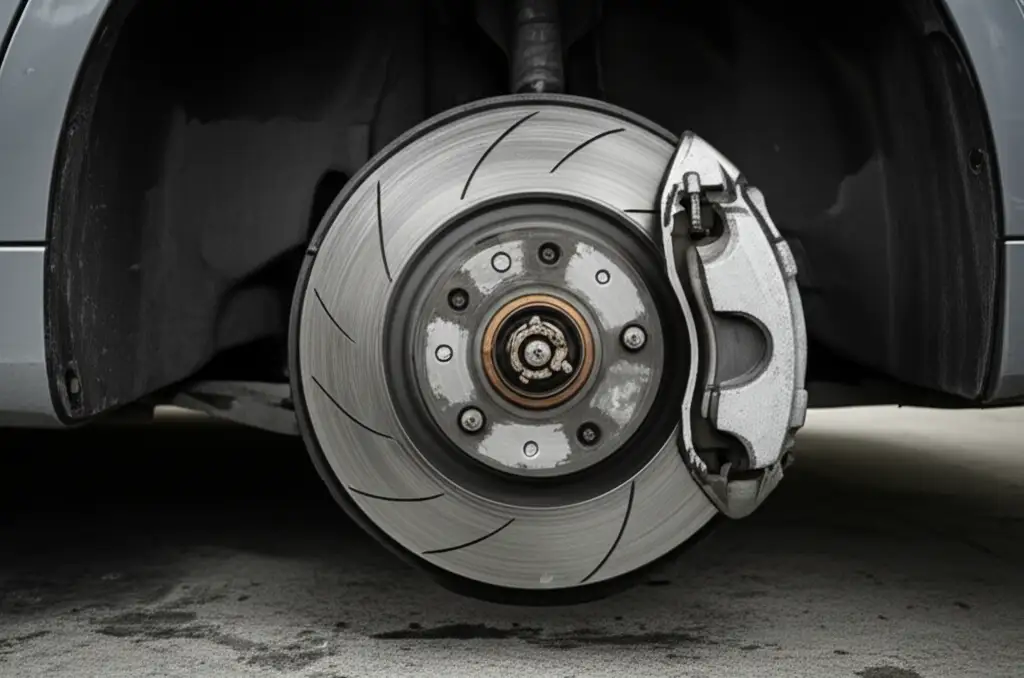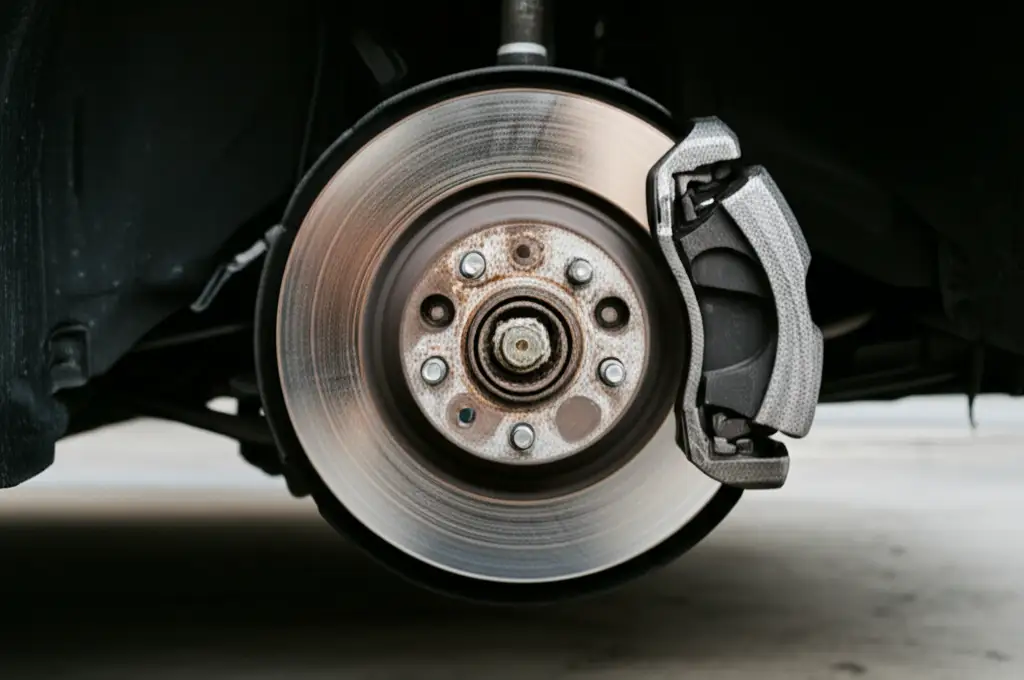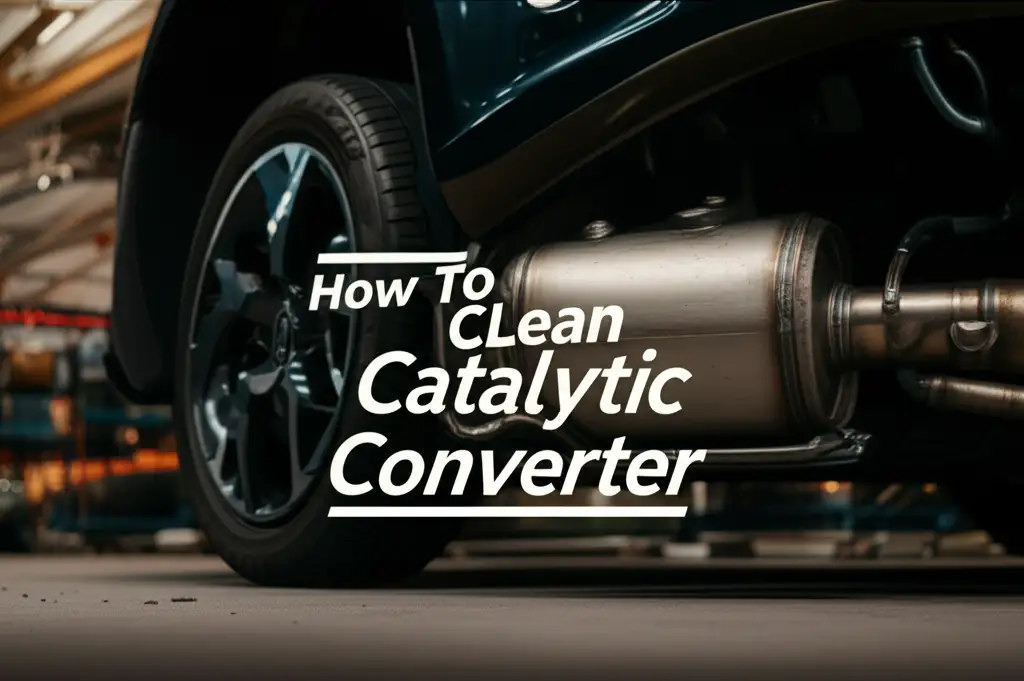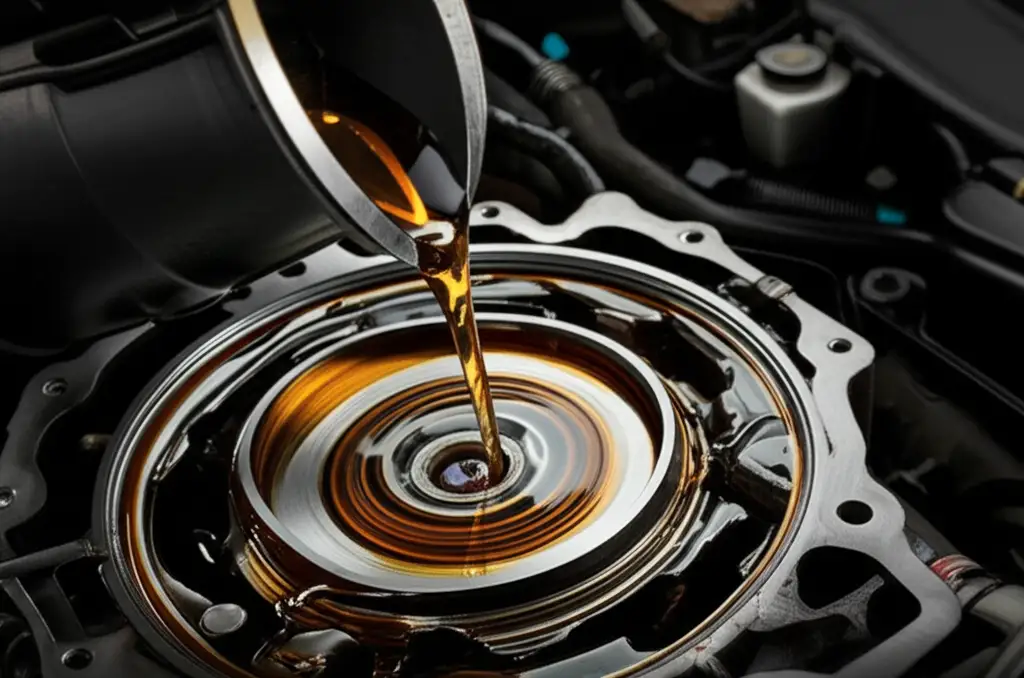· Automotive Maintenance · 17 min read
How To Clean Rust Off Battery Terminals
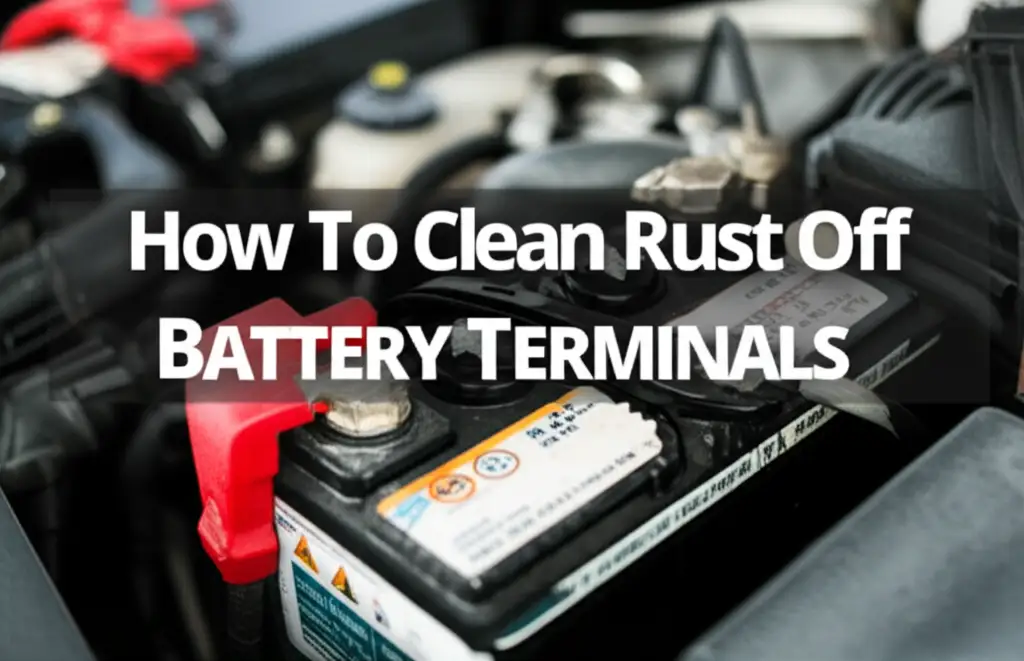
How To Clean Rust Off Battery Terminals Easily
Have you ever turned the key, expecting your car to roar to life, only to hear a weak click or nothing at all? A common culprit behind these frustrating moments is often the condition of your car’s battery terminals. They might appear fuzzy, crusty, or discolored. This build-up is often called “rust,” but it’s actually corrosion.
Cleaning this corrosion off battery terminals is a simple task. It can restore your vehicle’s reliable starting power. It also extends the life of your battery and electrical system. In this article, I will share the proper ways to handle this common issue. You will learn about the tools you need, the safety steps to take, and effective cleaning methods. We will also cover how to prevent corrosion from coming back. Get ready to give your car a new lease on life!
Takeaway
- Always disconnect the battery cables safely.
- Use a baking soda and water paste to neutralize corrosion.
- Scrub the terminals with a dedicated wire brush.
- Rinse and dry the battery parts completely.
- Apply anti-corrosion grease to prevent future build-up.
Clear, Concise Answer
To clean rust off battery terminals, disconnect the battery, create a paste of baking soda and water, apply it to the corroded areas, scrub with a wire brush, rinse thoroughly, dry completely, and apply a protective grease for future prevention.
Why Battery Terminal Corrosion Happens
Many car owners see a fuzzy, discolored substance on their battery terminals. They often call this “rust.” However, this common battery issue is actually corrosion. This distinction is important for understanding how to properly clean and prevent it. Corrosion on battery terminals mostly consists of lead sulfate or copper sulfate. It happens due to chemical reactions involving hydrogen gas, battery acid, and moisture.
Chemical Reactions
Car batteries work by chemical reactions. These reactions create electricity. A side product of these reactions is hydrogen gas. This gas escapes from small vents in the battery casing. When this hydrogen gas mixes with moisture in the air and any spilled battery acid, it creates a corrosive mixture. This mixture then reacts with the lead terminals and copper cables. It forms the bluish, whitish, or greenish crust you see.
Overcharging a battery can make this worse. Overcharging causes more hydrogen gas to release. This increases the chances of corrosion forming on the terminals. Even small leaks around the battery posts can contribute to this problem. They allow acid to seep out and react with the metal.
Environmental Factors
Environmental conditions play a big role in how fast corrosion forms. High humidity levels provide more moisture in the air. This moisture combines with the hydrogen gas and acid. This speeds up the corrosive process. Extreme temperatures can also affect battery performance. Hot weather can cause battery fluid to evaporate faster. Cold weather can reduce the battery’s ability to hold a charge. Both situations can indirectly lead to corrosion.
Loose battery connections are another factor. A loose connection allows gases to escape more freely. It also creates resistance. This resistance generates heat. This heat can accelerate the chemical reactions causing corrosion. Regular checks of your battery connections are important. They help maintain good contact and prevent problems.
Signs You Need to Clean
Your car will show clear signs if it has corroded battery terminals. The most obvious sign is the visible fluffy, powdery, or crusty build-up. It can be white, blue, green, or even black. You might notice your car cranks slowly when you try to start it. This means the engine turns over sluggishly. This happens because the corrosion stops electricity from flowing well.
Other signs include dim headlights or interior lights. Your car’s electronic accessories might also work poorly. This happens because the corroded terminals reduce the voltage reaching these parts. If you have ever experienced an issue with your car’s electrical system or noticed a strange smell from the battery area, it is time to check the terminals. Ignoring these signs can lead to your car not starting at all. It can also damage the battery or other electrical components. Sometimes, battery acid can even spill, requiring specific cleanup. You can learn how to clean battery acid off concrete if you encounter such a spill.
Essential Tools and Safety Gear for Battery Cleaning
Before you start cleaning battery terminals, gather the right tools. You also need to put on proper safety gear. Working with car batteries involves chemicals and electrical currents. Taking safety seriously protects you from harm. Having the correct tools makes the job easier and more effective. I want to make sure you stay safe throughout this process.
Must-Have Tools
You don’t need many special tools for this task. Most items are easy to find. First, you need a wrench. An adjustable wrench or a specific battery terminal wrench works best. This helps loosen the nuts that hold the battery cables. Next, a battery terminal brush is essential. These brushes have wire bristles shaped to fit around the battery posts and inside the cable clamps. They are designed for this specific cleaning job.
You will also need baking soda and water. These common household items create a paste. This paste neutralizes the battery acid. A spray bottle filled with water is useful for rinsing. You will also need a few clean rags or paper towels for drying. For a more thorough job, consider a battery terminal puller. This tool helps remove stubborn cable clamps without damaging them. Make sure all your tools are in good condition before you begin.
Personal Protective Equipment (PPE)
Safety is paramount when working with batteries. They contain corrosive acid and can produce flammable gases. Always wear personal protective equipment (PPE). First, eye protection is a must. Safety glasses or goggles protect your eyes from splashes of battery acid. Even a small drop can cause severe injury. I never start without them.
Next, wear chemical-resistant gloves. These protect your hands from the acid. Common household gloves are often sufficient for this task. Avoid wearing loose clothing or jewelry. These items can get caught in moving parts or conduct electricity. Work in a well-ventilated area. This helps disperse any hydrogen gas released by the battery. Hydrogen gas is highly flammable. Avoid smoking or open flames near the battery. Make sure your workspace is clear and well-lit. Having good light helps you see clearly and work safely.
Step-by-Step Guide: How to Clean Rust Off Battery Terminals
Cleaning corrosion from battery terminals seems difficult, but it is a simple process. Follow these steps carefully to ensure safety and effectiveness. I find that breaking it down makes it much more manageable. Remember, safety always comes first.
Disconnecting the Battery Safely
The very first step is to disconnect your car’s battery. This prevents electrical shorts and shocks. Always start with the negative terminal. The negative terminal usually has a minus (-) sign. It often has a black cable. Use your wrench to loosen the nut on the cable clamp. Once loose, pull the cable off the terminal. Move it away from the battery so it cannot accidentally touch it again. You can secure it with a bungee cord or zip tie if needed.
Next, disconnect the positive terminal. This terminal has a plus (+) sign and usually a red cable. Loosen the nut and remove the cable. Make sure both cables are completely clear of the battery posts. This isolates the battery and makes it safe to clean. Never let the positive and negative cables touch each other or any metal on the car. This can cause a dangerous spark.
Applying the Cleaning Solution
Now that the battery is safely disconnected, it is time to apply the cleaning solution. For battery corrosion, a paste made from baking soda and water is highly effective. Baking soda is alkaline. It neutralizes the acidic corrosion. Mix a few tablespoons of baking soda with a small amount of water in a non-metallic bowl. You want to create a thick paste, similar to toothpaste. If you prefer, some people also use a solution of vinegar and baking soda for various cleaning tasks, but for battery terminals, pure baking soda paste is usually sufficient for neutralization.
Apply this paste generously to both battery terminals. Also, apply it to the inside of the cable clamps. Use an old toothbrush or a small brush to spread the paste. You will see it fizz and bubble. This means the baking soda is reacting with the acid. Let the paste sit for a few minutes. This allows it to work on breaking down the corrosion. This neutralization process is important for effective cleaning.
Scrubbing Away Corrosion
Once the baking soda paste has had a few minutes to work, it is time to scrub. Use a dedicated battery terminal brush for this. These brushes have two ends: one for the posts and one for the cable clamps. First, place the post cleaner over the battery terminal. Twist it back and forth firmly. This removes the softened corrosion from the post.
Next, use the cone-shaped brush to clean the inside of the cable clamps. Insert it and twist until the metal is shiny. For stubborn spots, a wire brush or even sandpaper can help. However, be gentle. You do not want to scratch the battery posts or cables too much. My goal is always to see shiny, bare metal. This ensures the best electrical connection possible.
Rinsing and Drying the Terminals
After scrubbing, you need to rinse away the loosened corrosion and baking soda residue. Use a spray bottle filled with plain water. Lightly mist the battery terminals and cable clamps. Be careful not to spray too much water onto the battery or surrounding engine parts. The goal is just to wash away the paste and corrosion.
Once rinsed, thoroughly dry all the components. Use a clean, dry rag or paper towels. Make sure the battery posts and cable clamps are completely dry before reconnecting anything. Moisture can lead to new corrosion or short circuits. A clean, dry surface ensures a strong, reliable electrical connection. If you have any concerns about acid spills during this process, know that there are methods for cleaning battery acid off concrete and other surfaces.
Reconnecting the Battery
Reconnecting the battery correctly is just as important as disconnecting it safely. Always connect the positive terminal first. Attach the red cable to the positive (+) battery post. Use your wrench to tighten the nut firmly. The connection should be snug. It should not wiggle. However, do not overtighten. Overtightening can strip the threads or damage the battery post.
Next, connect the negative terminal. Attach the black cable to the negative (-) battery post. Tighten this nut firmly as well. Double-check both connections to ensure they are secure. A loose connection can cause poor electrical flow. It can also lead to new corrosion. After reconnecting, try to start your car. It should crank strong and start easily.
Alternative Cleaning Methods for Stubborn Corrosion
While baking soda is my go-to for battery terminal corrosion, some situations call for different approaches. Sometimes, the corrosion is simply too heavy. Other times, you might want a quicker solution. Understanding alternatives can help. It also helps to know what not to use, even if popular myths suggest otherwise.
Commercial Battery Terminal Cleaners
Many auto parts stores sell commercial battery terminal cleaning sprays. These products are often acidic or solvent-based. They are designed to dissolve corrosion quickly. They usually come in an aerosol can. You just spray them directly onto the corroded areas. They often change color to show they are working. Some turn pink or red when they touch acid.
These cleaners are fast and convenient. They can be very effective for heavy build-up. However, you still need to follow safety precautions. Wear gloves and eye protection. Use them in a well-ventilated area. Rinse the terminals thoroughly after use. Commercial cleaners are a good option if you want a dedicated product. They can save time compared to mixing your own solution.
Addressing Common Myths and Unsuitable Products
You may have heard about using cola or petroleum jelly to clean battery terminals. Let me clarify these myths. Many people suggest pouring cola (like Coca-Cola) over corroded terminals. The phosphoric acid in cola can break down some corrosion. However, cola is sticky and full of sugar. It leaves a residue that attracts dirt. This residue can also cause new problems later. It is not a clean or effective long-term solution. I do not recommend using it for cleaning.
Petroleum jelly (like Vaseline) is another often-misunderstood product. It is not for cleaning corrosion. Petroleum jelly is for preventing corrosion after cleaning. You apply a thin layer to clean, dry terminals. This creates a barrier against air and moisture. It helps stop new corrosion from forming. Never use it to clean existing corrosion. Using the right product for the right job is key. Stick to baking soda or commercial cleaners for removing corrosion. Use petroleum jelly for protection.
Preventing Future Battery Terminal Corrosion
Cleaning corrosion off your battery terminals is only half the battle. The true victory comes from preventing it from returning. Taking simple steps now saves you future headaches. Proactive maintenance is always better than reactive repairs. I always advise my friends to include these steps in their routine car care.
Anti-Corrosion Products
After you clean your battery terminals, you can apply protective products. These products create a barrier against the elements. One common option is dielectric grease. This is a non-conductive, silicone-based grease. You apply a thin layer to the cleaned battery posts and cable clamps before reconnecting. It seals out moisture and air. This prevents the chemical reactions that cause corrosion.
Another popular choice is anti-corrosion washers or pads. These are typically felt washers impregnated with a corrosion-inhibiting chemical. You place them over the battery posts before attaching the cable clamps. They release chemicals that neutralize any acid vapor. Both dielectric grease and anti-corrosion washers are inexpensive. They offer excellent protection. Using them extends the time before you need to clean again.
Regular Inspection and Maintenance
Regular inspection is your best defense against recurring corrosion. I make it a habit to check my battery terminals every few months. A quick visual check can spot early signs of build-up. If you see even a small amount of corrosion starting, it is easier to clean. Small problems do not become big problems. Look for any fuzziness, discoloration, or loose connections.
During your inspection, also check the battery’s hold-down clamp. A securely mounted battery prevents excessive vibration. Vibration can loosen connections. This can lead to increased corrosion. Ensure the battery tray is clean and dry. Any pooled liquids around the battery can also contribute to corrosion. Regular checks help you catch issues early. They also keep your entire battery system healthy.
Proper Battery Installation
Proper battery installation reduces the risk of future corrosion. When installing a new battery, ensure the posts are clean and dry. Apply anti-corrosion grease or washers at this stage. Make sure the cable clamps fit snugly on the terminals. Loose connections are a major cause of corrosion. They also reduce the flow of electricity.
Avoid overtightening the clamps. This can damage the battery posts or the clamps themselves. It can also warp the battery case. A secure but not overtightened connection is ideal. Always make sure the battery is positioned correctly in its tray. It should be securely held by its clamp. A well-installed battery performs better. It also has less chance of developing corrosion issues. Good installation sets the stage for a long, trouble-free battery life.
When to Seek Professional Help or Replace Your Battery
Sometimes, cleaning the battery terminals is not enough. Severe corrosion or recurring issues can signal bigger problems. Knowing when to call a professional or replace your battery saves you time and money. It also keeps you safe. I have learned to recognize these signs myself.
Signs Beyond Simple Corrosion
If you have cleaned your battery terminals multiple times, but corrosion keeps coming back very quickly, something else might be wrong. Extreme corrosion can mean your battery is overcharging. An overcharging battery produces excess hydrogen gas. This accelerates corrosion. This often points to an issue with your vehicle’s charging system. The alternator or voltage regulator might be faulty. A professional mechanic can diagnose these issues accurately.
Another sign to look for is a swollen or bulging battery case. This indicates internal battery damage. It means pressure is building inside the battery. This can be very dangerous. A swollen battery can explode. If you see cracks in the battery case or a strong rotten egg smell, these are also serious warnings. That smell means hydrogen sulfide gas is escaping. These are clear signs to get professional help immediately.
Age and Performance Degradation
Even with perfect maintenance, car batteries do not last forever. Most car batteries last between three to five years. As a battery ages, its ability to hold a charge decreases. You might notice your car cranks slowly, especially on cold mornings. This happens even after you have cleaned the terminals. This is a sign the battery is losing its capacity.
If your car needs jump-starts frequently, it is likely time for a new battery. Modern batteries often give little warning before failing completely. If your battery is nearing the end of its life, cleaning the terminals will only offer a temporary fix. A professional can perform a battery load test. This test measures the battery’s ability to hold a charge under load. It gives a clear picture of its remaining life. Replacing an old, weak battery prevents unexpected breakdowns. It ensures your car starts reliably every time.
FAQ Section
Q1: Is battery terminal corrosion rust?
No, battery terminal corrosion is not true rust. Rust forms when iron reacts with oxygen and water. Battery terminal corrosion is typically a build-up of lead sulfate, copper sulfate, or other chemical salts. These form from reactions between battery acid, gases escaping from the battery, and the metal terminals or cables. While it looks similar to rust, its chemical composition is different.
Q2: Can I use WD-40 on battery terminals?
No, you should not use WD-40 on battery terminals. WD-40 is a water displacement spray and lubricant. It is not designed to neutralize or clean battery acid corrosion. It can leave an oily residue that attracts dirt. It can also interfere with electrical conductivity. Stick to baking soda paste or specific battery terminal cleaners for effective and safe cleaning.
Q3: How often should I clean battery terminals?
You should inspect your battery terminals every few months. Clean them whenever you notice visible corrosion forming. For most drivers, cleaning every six months to a year is a good practice. If you live in a very humid climate or have an older battery, more frequent checks and cleaning might be needed.
Q4: What causes battery terminals to corrode quickly?
Several factors can cause rapid battery terminal corrosion. Overcharging by a faulty alternator is a common cause. Loose battery connections allow more gas to escape and create heat. Older batteries are also more prone to leaking acid vapors. Poor ventilation around the battery can trap gases, increasing corrosion rates.
Q5: Can I clean battery terminals without disconnecting?
Cleaning battery terminals without disconnecting them is highly discouraged. It is very risky. You could create a short circuit, causing sparks or even an explosion. You also risk electric shock. Always disconnect the negative cable first, then the positive, before you start any cleaning work. Safety should be your top priority.
Q6: Does cleaning battery terminals improve starting?
Yes, cleaning battery terminals significantly improves starting. Corrosion acts as an insulator. It blocks the flow of electricity from the battery to your car’s starter motor. Removing this corrosion restores a clean, efficient electrical path. This allows your battery to deliver its full power. This makes your car start much more easily and reliably.
Conclusion
Cleaning rust off battery terminals is a simple yet crucial maintenance task. It directly impacts your vehicle’s reliability and the lifespan of its battery. You have learned that the “rust” is actually corrosion caused by chemical reactions. You now know the essential tools and, most importantly, the vital safety steps. Disconnecting cables, applying a baking soda paste, scrubbing, rinsing, and drying are key steps.
Regular maintenance and protective measures, like using anti-corrosion grease, prevent future build-up. This keeps your vehicle running smoothly. By following these straightforward steps, you can confidently tackle battery terminal corrosion yourself. This saves you money and gives you peace of mind. Make cleaning your battery terminals a regular part of your car care routine. Enjoy the confidence of a car that starts every time!
- battery cleaning
- car maintenance
- rust removal
- battery terminal corrosion
- vehicle repair

